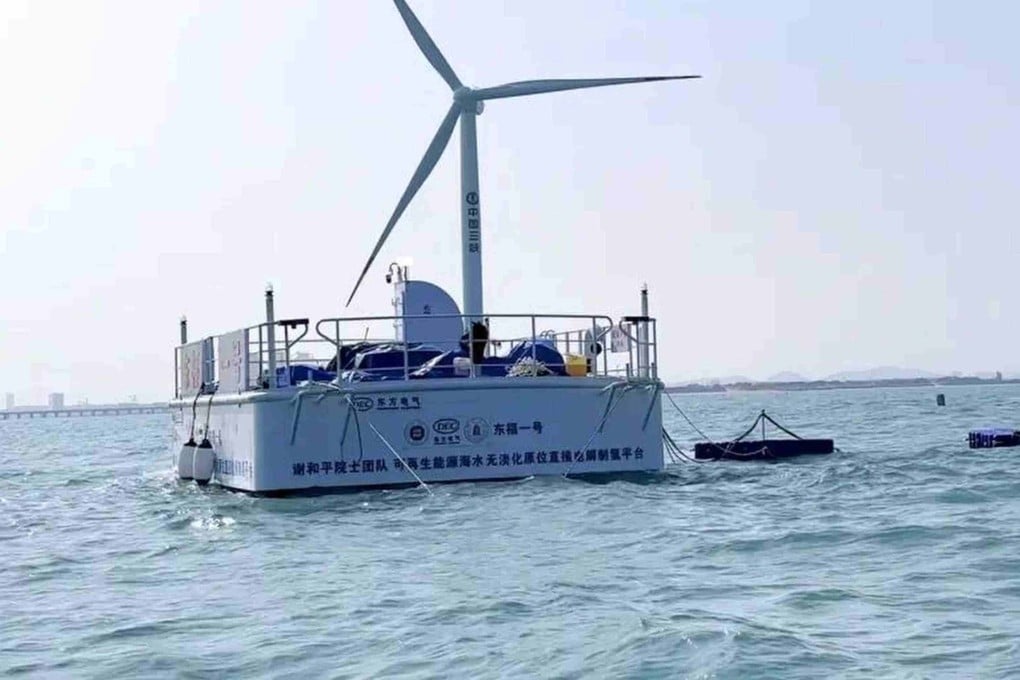Advertisement
How a floating hydrogen farm has moved China closer to clean renewable energy
- Scientists have successfully converted seawater into hydrogen and oxygen without the need for desalination
- The experiment points the way to an efficient new source of energy from electrolysed seawater
Reading Time:3 minutes
Why you can trust SCMP
64

Zhang Tongin Beijing
A team of Chinese researchers has moved a step closer in the quest for clean, renewable energy by converting seawater into hydrogen and oxygen.
The offshore platform development that harnessed both wind and solar power in the first successful attempt to use seawater without the need for desalination was led by researcher Xie Heping from Shenzhen University and the state-owned Dongfang Electric Corporation.
The platform – dubbed “Dongfu Number One” – is anchored in the waters of southeastern China off the coast of Fujian province and is capable of withstanding high waves and gusts up to force 8 on the Beaufort scale.
“It successfully completed a 10-day continuous operation during its inaugural run in May, marking a promising start to the prospect of offshore hydrogen production powered by renewable energy,” state news agency Xinhua reported on June 3.
Advertisement
The 63 square metre (678 sq ft) platform combines a hydrogen production system with a stable offshore wind power supply system. By combining the two components, the researchers created an environmentally friendly floating farm that electrolyses seawater into hydrogen without creating undesirable side effects or pollution.
“This demonstration experiment not only validated the device’s anti-interference capacity but also produced valuable data. The project is an exemplary case of transitioning from academic achievement to industrialisation,” the report said.
Xie’s team – the creators of the hydrogen production technology at the core of the platform – first published an article about the process in the peer-reviewed journal Nature in November.
Advertisement
Advertisement
Select Voice
Choose your listening speed
Get through articles 2x faster
1.25x
250 WPM
Slow
Average
Fast
1.25x
